Choosing an overseas dental lab without verifying certifications can expose your clinic to legal, customs, and audit risks.
Misleading claims, expired documents, or poor-quality systems often hide behind generic “ISO” labels and CE logos.
By understanding what certifications matter, how to verify them, and what real compliance looks like in daily operations, you can confidently select a crown & bridge lab that supports legal safety and reliable delivery.
To verify a dental crown & bridge lab’s certifications and compliance, confirm valid ISO 13485, CE, FDA and regional certifications. Check certificate authenticity through official registries, and assess compliance with OSHA and HIPAA (if applicable). Review their quality assurance execution, material traceability, hygiene protocols, and technician credentials. A reliable lab should maintain a strong quality management system and invest in continuing education to stay aligned with evolving standards and regulations.
What Certifications Should a Dental Crown & Bridge Lab Have?
To work with overseas clients legally and reliably, a dental crown & bridge lab must hold valid, region-specific certifications that apply to custom-made dental restorations. These include ISO 13485 for quality systems, FDA exemption for the U.S., CE conformity for the EU, and registrations for regulated markets like the UK and Australia.
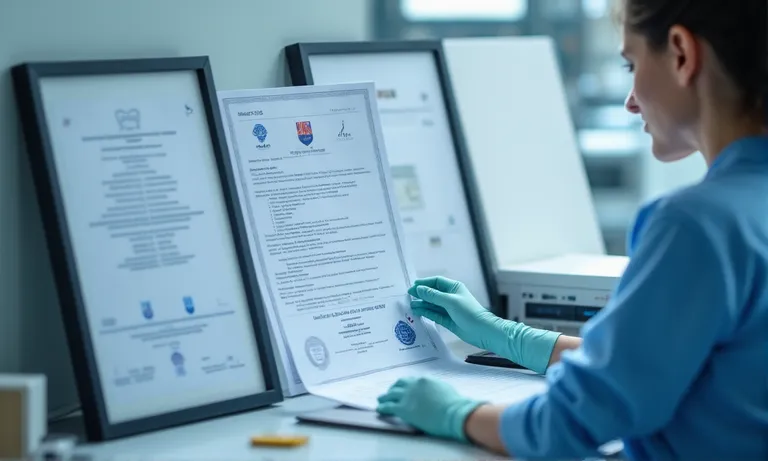
Dental-Lab-Certification-ISO-FDA-CE
What ISO 13485 Means for Custom-Made Dental Labs
ISO 13485 certifies that the lab operates a quality management system aligned with international medical device standards.
- Applies to processes that ensure consistency, traceability, and patient safety
- For dental labs, it governs case tracking, material control, and documentation integrity
- Confirms that the lab has been audited by an accredited notified body
- Signals the lab’s capability to maintain quality across high case volumes
This standard is essential for clients seeking predictability and regulatory alignment.
FDA Compliance for Custom-Made Devices Shipped to the U.S.
Custom dental restorations shipped to the U.S. fall under FDA’s Custom Device Exemption pathway, not general manufacturing approval.
- Labs must register as foreign device manufacturers with the FDA
- Products must qualify as custom-made (patient-specific, non-commercially mass-produced)
- Registration includes annual updates and product listings
- Enables legal importation for licensed U.S. dental professionals
Proper FDA compliance ensures smooth customs clearance and patient-level accountability.
CE Declaration of Conformity for EU Custom Restorations
For EU markets, CE marking is required to show the restoration meets EU Medical Device Regulation (MDR) requirements.
- Dental labs issue a Declaration of Conformity stating product class and regulatory path
- Typically classified under Class I (custom-made devices)
- Material suppliers must also be CE-certified
- Required for legal distribution within the EU
The CE pathway requires internal documentation, but not third-party certification for custom devices.
Market-Specific Registrations (e.g. MHRA for UK, TGA for AU)
Some countries require direct market registration even for custom-made dental restorations.
- MHRA (UK): Post-Brexit registration required for import or distribution in the UK
- TGA (Australia): Requires sponsor-based inclusion in the ARTG registry
- Health Canada: Distinct classification system and documentation for patient-specific devices
- Saudi FDA, SFDA: Increasingly enforces local approval documentation for imports
Labs serious about international work must align with local authorities beyond just ISO or CE.
How Can You Verify the Validity of a Lab’s Certifications?
Verifying a dental lab’s certifications involves confirming document authenticity, checking issuing authorities, and ensuring the certification scope aligns with your market and product type. These checks help protect clinics from compliance issues and regulatory penalties.

Dental-Certification-Verification-Checklist
Ask for Valid and Updated Certification Copies
Always request current, dated, and signed copies of a lab’s certifications.
- ISO 13485: Should list lab name, address, scope (e.g., dental lab), and expiry date
- CE Declaration: Must include product class, conformity path, and manufacturer’s signature
- FDA Registration: Ask for the most recent Device Listing or FEI number confirmation
- Regional documents: Such as MHRA registration or ARTG listing if applicable
Labs should be transparent and proactive in providing this documentation.
Cross-Check Certifying Bodies via Official Registers
Verifying the issuer is as important as reviewing the certificate itself.
| Certification Type | Official Lookup Tool | Notes |
|---|---|---|
| ISO 13485 | IAF CertSearch (www.iafcertsearch.org) | Search by lab name or cert number |
| FDA Registration | FDA Establishment Registration & Listing | https://www.accessdata.fda.gov |
| MHRA, TGA, etc. | National registers (UK, AU, Canada, etc.) | Use lab name or registration ID |
| CE Declaration | Manufacturer-issued—verify signature & format | Confirm legal entity & address match |
A legitimate certifying body will always appear in a searchable, transparent database.
Watch for Expired, Forged, or Regionally Invalid Documents
Red flags may not always be obvious but can cause serious legal issues.
- Expired certificates: Confirm validity period and last audit date
- Unaccredited logos: Cross-check if certifying body is recognized under IAF
- Mismatch of lab and cert name: Legal names must match exactly
- Outdated CE templates: Post-MDR declarations require updated formats
When in doubt, request direct confirmation from the certifying authority.
Identify Scope of Certification (e.g. lab-level vs. production process)
Many labs claim certification but the scope may be too narrow or irrelevant.
- ISO for distribution only: Not valid for production-level QA claims
- Certificates limited to non-dental items: Irrelevant to crown & bridge restorations
- Group-level ISO: Does not guarantee local facility compliance
- Self-issued CE claims: May apply only to certain materials, not the final device
Scope review ensures the certification supports your specific product type and jurisdiction.
Validating a lab’s certifications is not just about paper—it’s about protecting your clinic and patients from hidden regulatory risks. Request a certification audit checklist or sample verification flow from our team to help you get started.
What Quality Standards and Internal Compliance Policies Should Be in Place?
Certifications only reflect a lab’s framework. What truly matters is whether those standards are executed daily—from QA systems, material traceability, hygiene control, and cross-border documentation. These internal policies define whether the lab operates at a reliable, export-ready level.
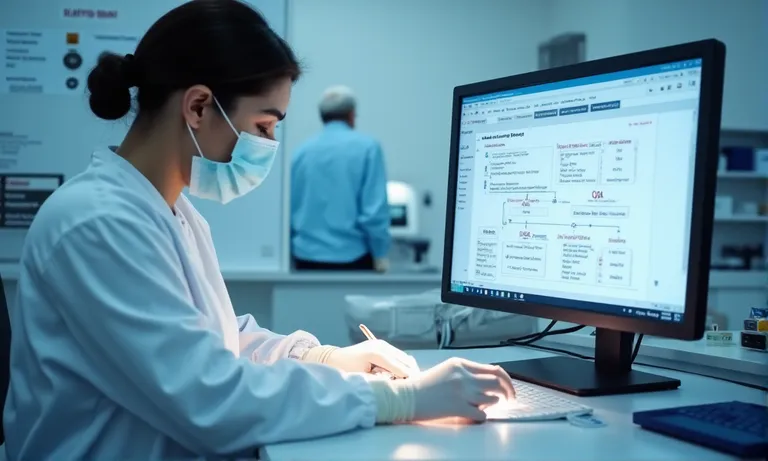
Dental-Lab-Quality-System-Compliance
Does the Lab Operate an ISO-Aligned QA System?
Daily adherence to ISO-aligned processes is key to delivering consistent crown & bridge restorations.
- Case documentation flow: Each order is tracked with a unique ID, linked to technician notes and material usage
- Process checkpoints: Internal QC steps at design, milling, and final finish stages
- Corrective action logs: Errors are documented and reviewed in team calibration sessions
- Audit readiness: QA records are organized for client or regulatory inspection
A documented system turns a certificate into predictable, scalable quality.
Are Materials Traceable by Batch with Full Documentation?
Material traceability ensures biocompatibility and legal defensibility, especially in regulated markets.
| Material Type | Traceability Info Tracked | How It’s Used |
|---|---|---|
| Zirconia discs | Batch number, CE/FDA proof, lot expiry | Attached to case record |
| E.max ingots | Manufacturer, lot, shade, expiration | For audits or remakes |
| Alloy (PFM) | Alloy certificate, composition statement | Required for CE declaration |
| PMMA blocks | Supplier label, date of milling | For documentation and follow-up |
Labs must keep these records digitally or physically for multiple years.
How Are Hygiene and Contamination Risks Controlled in Daily Operations?
Cross-infection risks exist even before chairside. Labs that export globally must adopt medical-level protocols.
- Workstation sterilization: Daily disinfecting procedures after each case
- Tool sterilization logs: Ultrasonic or autoclave cycles with usage timestamps
- Packaging protocols: Cleanroom bagging, sealed cases, and disposable gloves
- Employee hygiene: Handwashing SOPs and PPE enforcement in production zones
Hygiene SOPs are part of compliance—not just cleanliness.
Are Customs or Import Requirements Integrated into the Workflow?
Many clients overlook how labs handle cross-border documentation, which can affect delivery and compliance.
- Proforma invoices with HS codes: Prepared automatically at dispatch
- Declaration of “custom-made dental device”: Prevents misclassification at customs
- Material origin disclosure: Needed for certain regulated countries
- Sample documentation on request: Helps with import agent reviews or audits
Labs serving global clients must handle both case production and documentation as a complete export package.
Compliance is more than certificates—it’s about systems that show up in every case, every day. Labs that implement QA, traceability, hygiene, and export readiness don’t just pass audits—they prevent problems before they start.
How Do Certified Labs Support Clients with Regulatory Documentation?
Certified labs don’t just maintain their own compliance—they also assist clients in meeting audit requirements, import requirements, and tender requirements. A qualified lab should provide documentation support with every shipment, and be ready to supply regulatory materials tailored to your region’s standards.
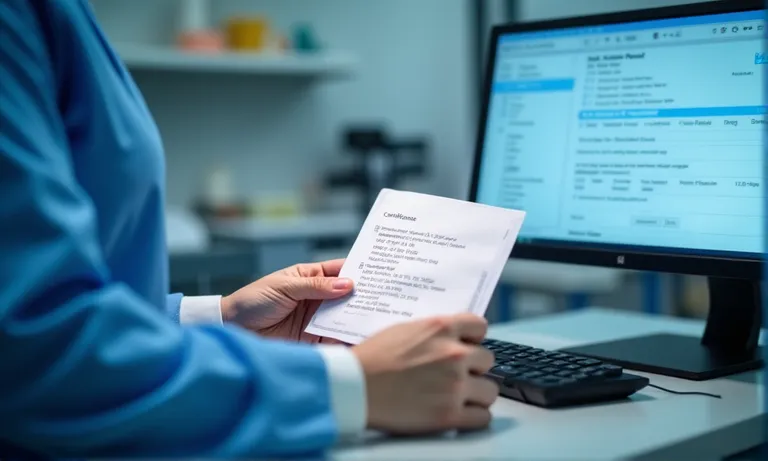
Dental-Lab-Regulatory-Document-Support
Do They Include Certificate Copies with Each Batch Delivery?
Routine documentation should be integrated into each shipment to simplify client-side record keeping.
- ISO certificates: Attached as a standard copy or accessible via QR code
- CE Declarations: Included with case when shipping to EU markets
- FDA registration notice: Provided on request for U.S.-bound deliveries
- Material batch sheets: Documenting lot numbers, expiry dates, and biocompatibility
This paperwork ensures the client has everything needed for internal or regulatory documentation checks.
Can They Help You Respond to Tender, Audit, or Registration Requests?
Well-organized labs can quickly assist when clients face external compliance demands.
- Tender support: Supplying regulatory proofs, production flowcharts, and capacity statements
- Clinic audits: Pre-compiled documentation folders that match inspection requirements
- Importer applications: Providing manufacturer authorization and conformity records
- Online portals: Clients can download lab credentials and product declarations as needed
Labs with experience in these requests understand how to prepare materials professionally and efficiently.
Are Documents Aligned with Your Region’s Regulatory Language Format?
Language compatibility and format accuracy can make or break an audit response.
- English, French, German versions: Available for CE and ISO documents
- Region-specific terms: “Custom-made device” versus “medical appliance” adjustments
- PDF with electronic seals: For secure submission to digital portals
- Custom headers/footers: Modified layouts to match national guidelines (e.g., Health Canada)
This level of detail reflects a lab’s readiness to support real-world client demands—not just internal compliance.
Supporting documentation is not a bonus—it’s a daily part of reliable B2B lab service. Contact us to request sample compliance packets or region-specific documentation templates to see how we help simplify your regulatory process.
What Are Common Compliance Risks When Working with Offshore Dental Labs?
Outsourcing crown & bridge production overseas offers advantages—but without proper verification, it can also expose your clinic to regulatory risk. Understanding common compliance pitfalls helps procurement teams avoid costly delays, failed audits or product seizures.
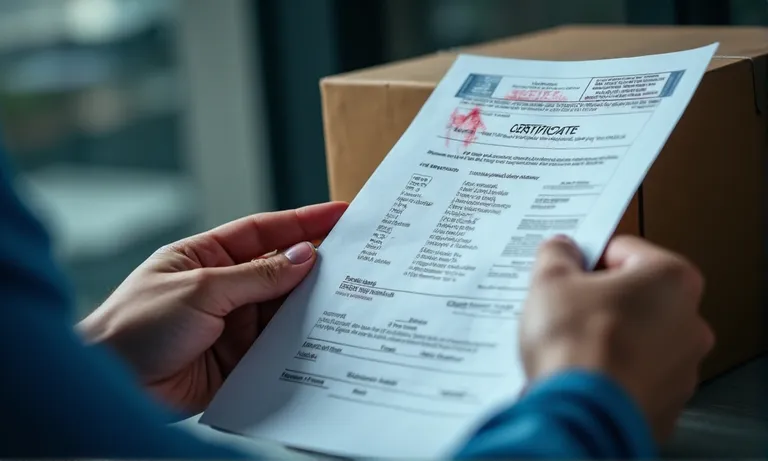
Offshore-Dental-Lab-Compliance-Risks
Fake or Unverified Certificates from Unaccredited Sources
Unaccredited “certificates” are common in price-sensitive offshore markets.
- Documents from bodies not listed in IAF CertSearch or FDA registers
- “Decorative” logos or seals with no registration number
- No expiration date or scope of certification clearly listed
- Refusal to provide originals or notarized copies
Always validate the certifier—not just the certificate.
Certificates That Do Not Match Product Types or Regions
Some labs present valid documents—but for the wrong products or markets.
- CE marking for general devices, not “custom-made dental” restorations
- ISO certification for import/distribution—not production
- U.S. FDA filings that don’t list the correct product codes
- Documents in wrong languages or with irrelevant legal frameworks
Even legitimate labs may operate outside your required scope without realizing it.
ISO-Labeled Labs That Lack Actual QA Systems
Displaying an ISO certificate doesn’t guarantee real implementation.
- No internal process checkpoints or documentation protocols
- No batch tracking or technician accountability
- “One-person” operations with no peer review or QC stage
- No audit trail when errors or remakes occur
A certificate on the wall is not a substitute for a repeatable system.
Labs Unfamiliar with Your Local Regulations or Documentation Needs
Regulatory requirements differ significantly by region, and many labs aren’t prepared.
- No awareness of CE MDR format changes or FDA custom-device exemption
- Failure to include documentation in shipment
- No template support for audits or tenders
- Misuse of labeling that triggers customs holds
Partnering with a lab unfamiliar with your regulatory landscape increases operational risk.
✅ Certificates must be issued by recognized bodies and match product scope – TRUE
Validation involves checking not just the document but its source, region, and content relevance.
❌ If a lab claims “ISO certified,” all quality and compliance issues are covered – FALSE
ISO labels don’t guarantee execution. Internal systems must be inspected separately from paper claims.
What Key Questions Should You Ask Before Partnering with a Crown & Bridge Lab?
Before committing to a dental lab partnership, asking the right compliance-related questions is critical. These inquiries help confirm whether the lab’s certifications, systems, and documentation practices align with your region’s legal requirements and operational standards.
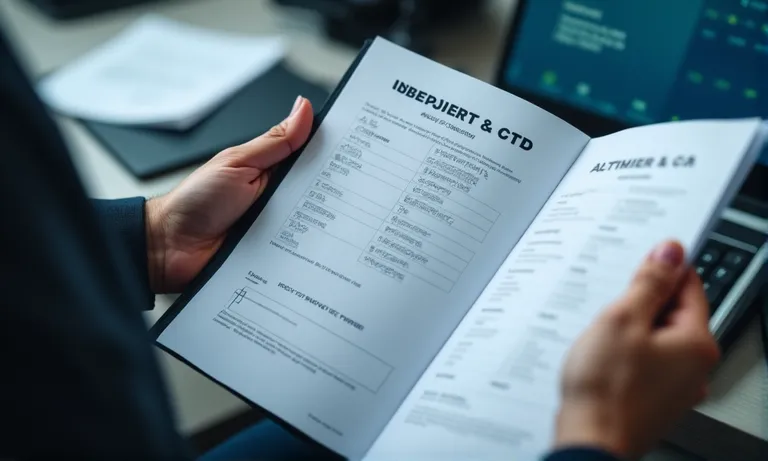
Dental-Lab-Compliance-Checklist-Partner-Evaluation
Can You Provide Valid ISO and Market-Specific Certifications?
Start by confirming whether the lab holds verifiable and relevant compliance documents.
- ISO 13485 certificate from an accredited body with valid expiration
- CE Declaration for custom-made devices (not general CE logo)
- FDA registration (with exemption pathway if shipping to U.S.)
- Regional approvals for markets like the UK (MHRA), Australia (TGA), or Canada
Valid documentation proves the lab is authorized to serve your region legally.
How Do You Apply These Standards in Daily Case Production?
Certifications are only meaningful if translated into everyday procedures.
- What traceability systems are in place for materials and cases?
- Are there internal QC checkpoints before shipping?
- How are remakes or complaints documented and analyzed?
- Can I see a copy of your production SOP or QA process map?
These answers reveal whether the lab’s workflow is disciplined or improvised.
What Happens If There’s a Compliance Dispute or Certificate Issue?
Even with trusted partners, it’s essential to prepare for edge cases.
- Who handles regulatory inquiries—your team or the lab?
- Can the lab provide notarized or apostilled documents quickly?
- What’s the SLA for replacing incorrect or expired documents?
- Are there indemnity clauses in place if non-compliance causes loss?
Clear answers reduce liability and increase confidence in long-term cooperation.
A structured compliance conversation reveals far more than a brochure. Asking these questions early prevents downstream complications and helps you select a lab that’s not just certified—but operationally ready.
Conclusion
Regulatory compliance in outsourcing is not just about ticking certification boxes—it’s about how consistently those standards are practiced. A reliable crown & bridge lab should not only hold valid documentation but also support your clinic or business with regionally tailored, audit-ready, and traceable production workflows.
- A compliant lab integrates international certifications with daily QA and documentation systems to protect partners across markets.
- Ensure the lab holds valid ISO, CE, FDA, and region-specific approvals applicable to custom-made dental restorations. valid ISO, CE, FDA, and region-specific approvals
- Learn how to verify certificates through official registries and assess document scope and authenticity. verify certificates through official registries and assess document scope and authenticity
- Evaluate whether the lab implements quality systems, material traceability, and hygiene protocols as part of its daily operations. quality systems, material traceability, and hygiene protocols
- Confirm the lab supports you with shipment documents, batch records, and region-specific paperwork for audits or tenders. shipment documents, batch records, and region-specific paperwork
- Watch out for non-accredited, mismatched, or unverified compliance claims that could lead to customs or legal issues. non-accredited, mismatched, or unverified compliance claims
- Ask clear compliance-related questions about certification, application in daily production, and dispute resolution policies. certification, application in daily production, and dispute resolution policies
Need guidance reviewing your current lab partner’s certifications or starting a compliance-ready trial case? Contact Raytops’ compliance support team today.


